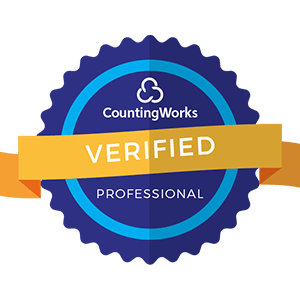
Employee satisfaction is one of the most important avenues toward greater productivity and business growth. Having engaged workers leads to improved company culture, workforce retention, motivation, and other benefits for organizations of all kinds.
Focusing on employee satisfaction involves more than simply increasing compensation or giving workers a day off, though. It is an ongoing process that may involve many teams, like the HR department and business leaders, to get just right. These are especially important considerations in light of the COVID-19 pandemic, which has increased anxiety, stress, and feelings of isolation for workers across the country.
This guide will walk you through why employee satisfaction is so important, how to improve employee satisfaction in your organization, and what could happen if you don’t.
Employee satisfaction refers to how engaged, happy, and motivated people are at work and with their individual positions. It encompasses whether they feel important or like their daily work matters. The concept sometimes requires simple questions, such as:
Focusing on employee satisfaction requires revisiting company culture, benefits, and opportunities for advancement. The attitudes of employees often reflect the company itself and can have a big effect on how others view the organization.
Employee satisfaction is a crucial component of worker support. You always want your staff to feel happy at work and reassured that their job plays a role in the overall success of the company. These considerations also affect how the company operates and grows, and are especially important because they are related to the following benefits.
Many studies have linked employee satisfaction to overall profitability. Satisfied workers tend to be more productive and do their jobs more effectively. Companies with more engaged staff have been shown to have 21% higher profitability.
Employees who are satisfied and engaged at work are more likely to stay. The cost of having to fill positions all the time can be high, so increasing retention can save the company money while helping foster a positive company culture where people want to work.
Employee satisfaction is also linked to customer satisfaction. When people want to be at work and enjoy their jobs, they are more likely to create an environment that is encouraging and positive – and customers notice. Satisfaction with a company can work like dominoes, affecting every aspect of the organization.
Employee satisfaction is key to becoming a successful business. Companies that ignore that fact are really putting themselves at a disadvantage.
Boosting engagement is clearly important for company culture and overall success. How do you start improving employee satisfaction? Here are six ways to get started.
Employees are more engaged when they feel like they can make decisions. They will feel more of a connection to what they’re doing when they know how and why it matters. Allow them to really take control of their role so they feel ownership over their tasks.
Make sure employees have plenty to do to stay busy and engaged but are never overworked. Burnout or increased stress can result when they have too much on their plate or are working too many hours.
Employee satisfaction is often tied to compensation and benefits. However, workers care a lot about the little things too, like paid family leave or flexible work arrangements. Become more familiar with which benefits they care about most to make their work-life balance more manageable and satisfactory.
Team building is another important part of company culture. Employees will feel like they are supported when they feel part of a team, and often these feelings are nurtured through planned social activities and interactions. Start planning events, like game nights or happy hours, where workers can connect with one another on topics other than work.
Employees appreciate being recognized for doing a job well done. You don’t always have to spend money on material rewards or bonuses. Sometimes just public recognition for a milestone or a big win will make workers feel recognized and appreciated. These gestures can quickly lead to greater employee satisfaction and a better work environment.
Sometimes workers will mess up. They are human and mistakes happen. Instead of imposing unnecessary punishments or consequences when an error occurs, turn the mistake into a learning opportunity. Some mistakes may need additional action, especially if they occur frequently or on purpose, but most of the time patience, acceptance, and additional guidance are better approaches that will generate positivity.
Employees today are more informed about the state of the workforce, and about what they should reasonably expect from their employers, than ever before. Count on them to push for better work conditions and treatment, and don’t be surprised when they refuse to settle..jpg?width=1000&name=Untitled%20design%20(61).jpg)
Improving employee satisfaction is important for any company looking to achieve its maximum potential and retail its workforce. Failing to do so could have major negative impacts, including:
These effects can happen quickly, even if just one employee is unhappy at work. Your plan should focus on individual workers and how you can meet their needs. Work with an HR professional if you still have questions about specific actions to take to improve employee satisfaction.
Your HR department needs all the tools necessary to streamline processes, avoid employee burnout, and improve HR tasks like payroll management and organization. Ignite HCM offers ADP payroll management services, consulting, and optimization services to help you help your workers. We work with you to find the right ADP payroll solution for your organization’s priorities.
Contact Ignite HCM for help with your payroll management and HR optimization needs.


